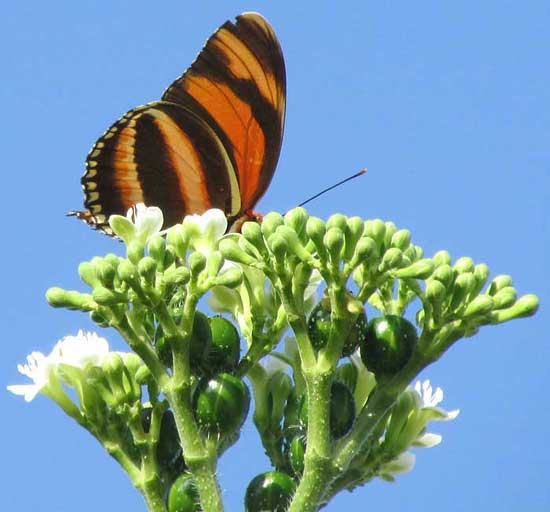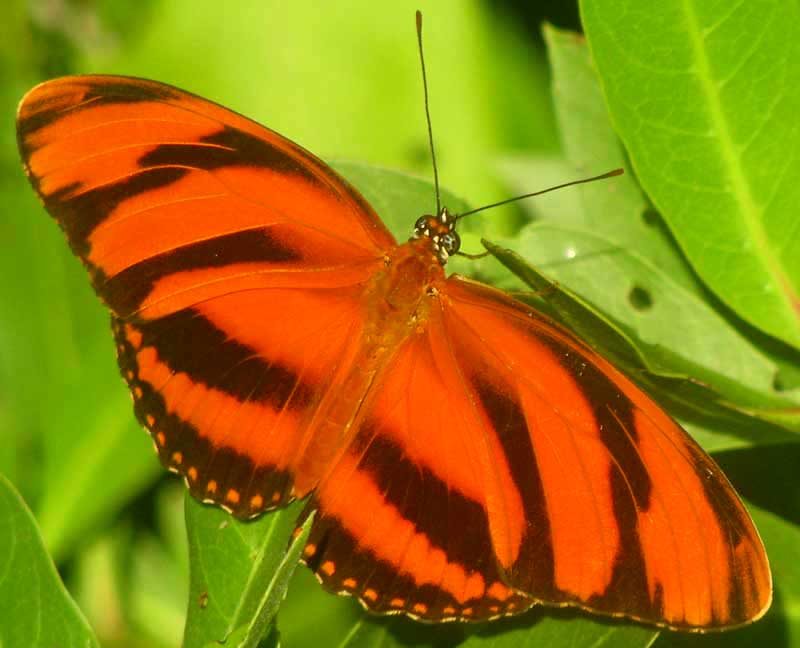Excerpts from Jim Conrad's
Naturalist Newsletter
from the August 7, 2016 Newsletter issued from Hacienda Chichen Resort beside Chichén Itzá Ruins; limestone bedrock; elevation ~39m (~128ft), N20.675°, W88.569°; central Yucatán state, MÉXICO
BANDED LONGWING
One of the prettiest sights I've seen lately was a Banded Longwing butterfly, DRYADULA PHAETUSA, flitting about the white flowers of a "Mala Mujer" bush, shown below:

Below, a shot of another Banded Longwing with its wings open shows a different pattern on the wings' upper surfaces:

Though Banded Longwings turn up from time to time here they're not common, even though they enjoy a big distribution area from central Mexico south to Brazil, sometimes during the Northern summer even turning up as far north as central Florida. Banded Longwings belong to the Longwing "tribe" of brush-footed butterflies, though its wings aren't nearly as long and narrow as our main longwing species here, the Crimson-patched Longwing shown at www.backyardnature.net/yucatan/mariposa/butt111.jpg
Banded Longwings are big "puddlers" -- they like to congregate, sometimes in the hundreds, on patches of moist soil containing mineral salts, which their bodies need for making pheromones, sperm, and other things. When you see large numbers of butterflies around a puddle, mainly sodium is being sought because it's lacking in the butterfly's diet of mostly nectar and fruits. Among butterflies, sodium is vital for digestion, excretion, reproduction and flight.
If moist soil containing mineral salts isn't handy, butterflies often resort to taking it from rotting fruit, human sweat, dung or carrion, which also may contain much needed amino acids.
During dry weather there's a certain spot beside the hut especially attractive to puddling butterflies. Each morning I wet down that spot, then the rest of the day am rewarded with a giant cloud of mostly yellow and white butterflies that rise into a wondrously animated cloud each time I exit the hut's door.